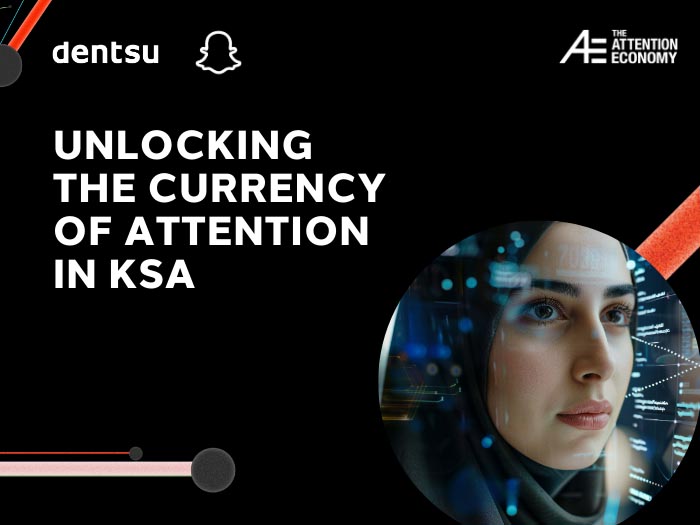News - Digital/Tech
Is ‘Attention’ Getting Your Attention?
by Arpit Saxena, OMG
September 25, 2023
.jpg) Advertisement
AdvertisementAs a media professional, you may have heard of Attention already. It is defined as a consumer looking at an ad, at the time they were exposed to it. Insider Intelligence calls it the next frontier for digital ad measurement. IAB Europe claims attention will ensure marketing plays a central role in delivering against business objectives.
Inspired by the work done by Dr. Karen Nelson-Field and others in the space, I am committed to make a change to our ad efficiency measurement ecosystem. As a media buyer, what I care about is finding efficient ways to run and measure media campaigns for my clients, that allow me to associate their investment to their bottom line. With the introduction of new user privacy laws, 3P cookie deprecation and tracking limitations, deterministic measurement is becoming a challenge. This situation highlights the need for better advertising metrics and measurement technologies that can fill the gap.
While Reach, Frequency and Viewability are fundamental advertising metrics, adding data, which tells if a user actually looked at an ad, makes the measurement of these fundamentals better.
Data presented in a recent conference between Adelaide & ANA showed 28% of time spent by users consuming media content is in presence of Ads but the user is only paying attention to ads for 3% of the time. With an increasing number of ad placements and ‘Made for Advertising’ websites, even the ads ignored by users score high viewability.
We need to focus on the problem and that means measuring human viewed attentive impressions with active and passive attention.
Active attention is direct ad viewing and passive attention is looking near the ad without direct focus. This leap in technology promises measurement of meaningful impressions that lead to mental availability or more. This is not to say that viewability is flawed – in fact it is the baseline to Attention Measurement because non-viewable impressions can’t garner any attention. With that said, we need to take care not to mistake high viewability for high attention.
Although we are yet to see a standardized Attention Measurement methodology across all media channels, platforms, and formats, there are competing methodologies available. For example, panel-based focus groups are used in some instances to collect facial footage data which is fed to mathematical ML models to analyze user gaze and mobile device-based signals to understand attention based on device use. Interestingly, initial research conducted using these methodologies was applied to TV along with other media channels and studies found TV media to have highest and most consistent levels of Attention.
If the same concept is applied to MENA where linear TV still holds a decent share of investment, measuring Ad effectiveness via Attention measurement can unlock new insights into the value of linear TV. Maybe the value of digital video and TV advertising can be meaningfully compared with the help of Attention measurement?
Another force impacting media industry is the shift in the privacy landscape limiting our ability to track the path to conversion effectively. Our industry is re-evaluating the classic Media Mix Modelling (MMM) and it will be interesting to see what impact Attention Measurement, as an independent variable, will have on MMM’s which have been an established way to unlock insights around true ad effectiveness for individual media channels.
As the topic continues to mature, Attention very well could become a strong performance indicator that connects media strategy to investments and ultimately leading to business outcomes. This requires significant investment from media agencies to evolve to upfront Attention based planning. At OMD, we have used Attention data to feed into our channel planning curves.
This approach optimizes client investment by gauging brand attention needs, identifying growth levers for mental availability, and maximizing ROI. Our planning framework and Attention Requirement Calculator decide how much and what kind of attention (active or passive) is needed to drive results. An output of the plan helps pick the right media, for example – prioritizing a 10" YouTube ad for active attention and 60” cinema ads when situation demands both active and passive attention.
Although, we are still in early stages of this topic and the industry may not be able to define a unified Attention Measurement methodology just yet, but the situation demands unity between advertisers, agencies, platforms & publishers to align on principles of change. With the current rapid pace of development, Attention promises significant shifts in the industry. My advice to media professionals is to optimize media plans for human viewed attentive impressions and start measuring the impact, if not already.



.jpg)










